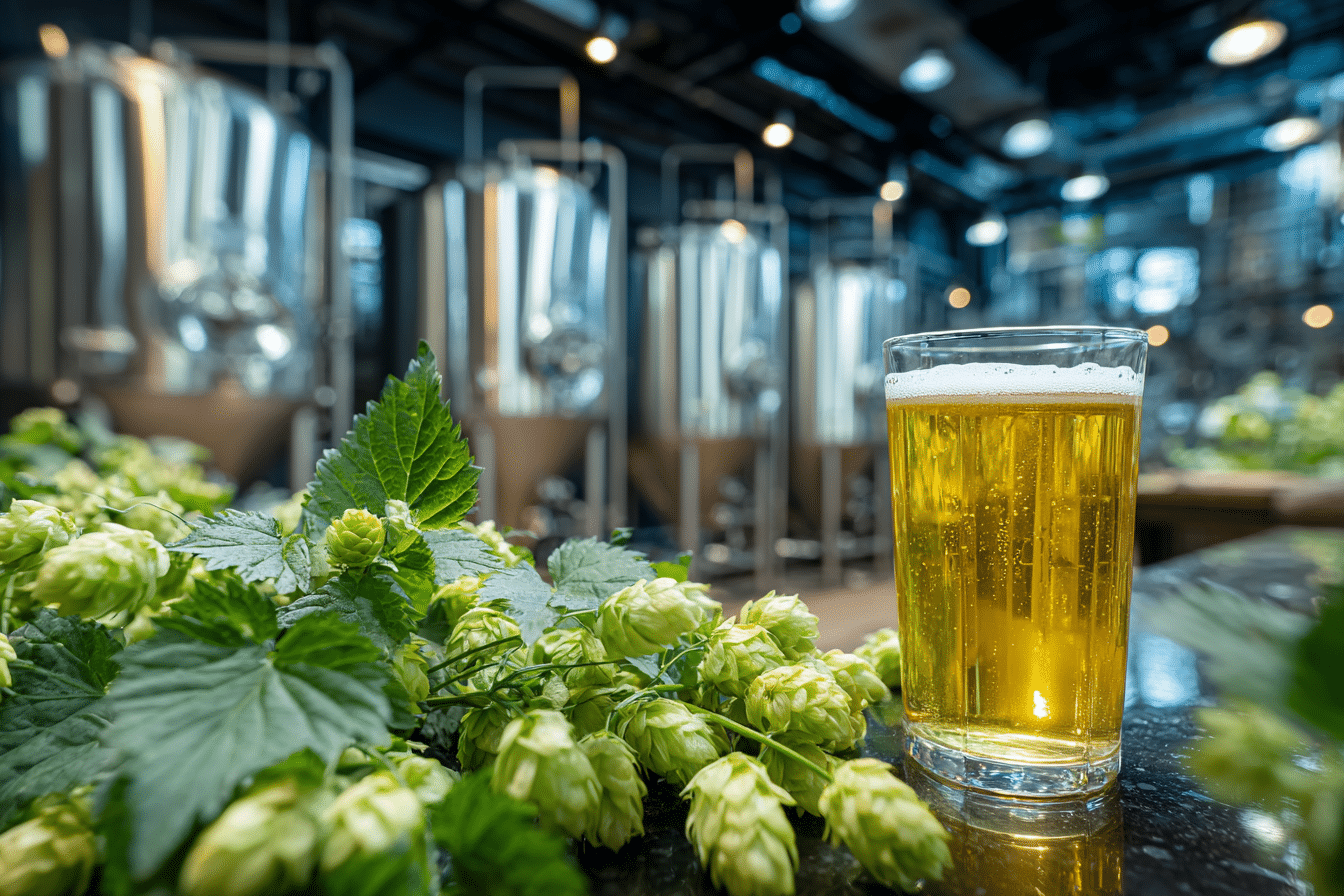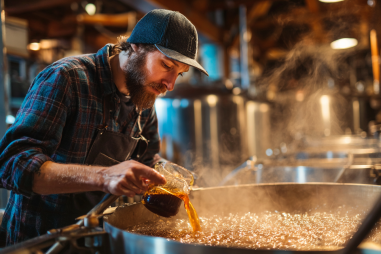Ever found yourself enjoying a crisp, light beer on a warm day, wondering what goes into crafting that perfectly refreshing pint? The American Light Lager is a staple in the beer world, known for its clean finish and easy drinkability. But behind that simplicity lies a carefully designed brewing process tailored to produce its signature style. Let’s take a closer look inside the American Light Lager brewing process to understand how it’s made and what makes it so distinctive.
Introduction to American Light Lager Brewing
American Light Lager is a beloved beer style synonymous with refreshment and mainstream appeal. Characterized by its pale golden color, low bitterness, and light body, it is designed to be exceptionally quaffable and easy on the palate. Unlike more robust lagers or ales, American Light Lagers prioritize crispness and subtlety over complexity or rich flavors. Achieving this balance demands a specific brewing approach that emphasizes precision, ingredient quality, and process control.
The brewing process for American Light Lager involves adapting traditional lager methods while making deliberate choices to reduce calories, alcohol content, and residual flavors. The result is a beer that can be consumed in larger quantities without overwhelming the drinker, which explains its sustained popularity in the U.S. and around the world.
Key Ingredients and Their Role
Every great beer starts with quality ingredients, and American Light Lager is no exception. However, the ingredient selection and proportions are carefully calibrated to craft the desired lightness and flavor profile.
- Malted Barley: The backbone of the beer, malted barley provides the fermentable sugars necessary for alcohol production. Light lagers typically use pale malts, sometimes supplemented with adjuncts such as rice or corn, to increase fermentability while keeping the flavor mild and body light.
- Adjunct Grains: Adjuncts like rice and corn are commonly added because they ferment fully and add little flavor, which helps reduce the beer’s body and calories. They also contribute to the trademark clean taste.
- Hops: Hops impart bitterness, aroma, and flavor, but American Light Lagers use them sparingly. Usually, mild American hop varieties are selected for their subtle bitterness and minimal aroma to avoid overpowering the delicate malt and adjunct flavors.
- Water: Water chemistry is vital. Lager water typically undergoes treatment to reduce mineral content, achieving a soft water profile that complements the mild character of this beer style.
- Yeast: Special lager yeast strains are used to promote clean fermentation with low ester production, contributing to the crisp and neutral flavor and aroma essential to light lagers.
Step-by-Step Brewing Process
The brewing of American Light Lager follows classic lager techniques but with some tweaking aimed at producing a lighter, cleaner beer. Here’s a breakdown of the typical process:
Mashing
The journey begins with mashing, where crushed malt and adjunct grains are mixed with heated water to convert starches into fermentable sugars. For American Light Lager, the mash temperature is generally set on the lower end, around 148°F to 152°F (64°C to 67°C). This lower temperature encourages the production of more fermentable sugars, resulting in a thinner body and greater attenuation.
Lautering and Sparging
After mashing, the sweet wort is separated from the spent grains through lautering. The grains are rinsed with hot water in a process called sparging to extract remaining sugars, aiming for a wort that is clean, clear, and free from excess proteins or haze-contributing materials.
Boiling
The wort is then boiled, typically for 60 to 90 minutes. Hops are added mainly at the beginning to contribute bitterness but in restrained amounts to maintain a low bitterness profile. This stage also serves to sterilize the wort and drive off unwanted volatile compounds.
Cooling
Once the boil is complete, the wort is rapidly cooled to fermentation temperature, usually around 48°F to 55°F (9°C to 13°C) for lager yeast.
Fermentation Specifics for Light Lagers
Lager yeast plays a central role in developing the clean and crisp characteristics of American Light Lager. The yeast is inoculated into the cooled wort and fermentation proceeds at cooler temperatures over several weeks. These cooler temperatures slow yeast metabolism, minimizing the production of fruity esters and other secondary metabolites that would add complexity unwanted in a light lager.
During fermentation, yeast converts fermentable sugars into alcohol and carbon dioxide, typically reaching a lower final gravity than other beer styles to ensure a light body. Extended fermentation and conditioning times help mature the beer, allowing off-flavors to dissipate and the profile to refine.
Filtration and Carbonation Techniques
After fermentation and conditioning, the beer is clarified through filtration processes designed to remove yeast and protein particles. Many American Light Lagers undergo a fine filtration, sometimes using diatomaceous earth or membrane filters, to achieve brilliant clarity and stability.
Carbonation is adjusted to give the beer its signature effervescence. American Light Lagers often feature moderate to high carbonation levels, enhancing the crisp mouthfeel and refreshing qualities. Carbonation is usually introduced via forced carbonation in tanks, allowing precise control.
Quality Control and Consistency in Mass Brewing
American Light Lagers are often produced on a large scale, demanding rigorous quality control measures to ensure every batch meets the brand’s standards. This includes:
- Sensory analysis to check flavor, aroma, and mouthfeel
- Laboratory testing for alcohol content, pH, bitterness, and microbiological stability
- Process monitoring through automated systems tracking temperature, gravity, and fermentation progress
Consistency is paramount, so breweries employ standardized recipes and processes alongside regular training of staff and meticulous cleaning procedures to prevent contamination.
How Homebrewers Can Craft American Light Lagers
Homebrewing an American Light Lager is entirely achievable with attention to detail and patience. Here are some tips for enthusiasts aiming to replicate this style at home:
- Choose the Right Ingredients: Use a base of pale malt with adjuncts like rice or corn to lighten body and flavor. Pick a neutral American lager yeast strain and use soft, clean water.
- Maintain Low Mash Temperatures: Aim for 148°F to 152°F to produce fermentable wort.
- Focus on Clean Fermentation: Keep fermentation temperatures low (around 50°F) to avoid off-flavors and achieve a crisp profile.
- Extended Lagering: Condition your beer for several weeks at near-freezing temperatures to develop clarity and smoothness.
- Control Carbonation: Carbonate to a moderate to high level to get that refreshing fizz.
Patience is key as lagers take longer to ferment and condition than ales, but the result is a rewarding, easy-drinking beer.
The Art Behind Brewing American Light Lager
While American Light Lager might seem straightforward due to its clean and simple character, brewing it well requires a masterful balance of science and art. From selecting the right ingredients to manipulating mash temperatures, managing fermentation, and ensuring clarity and freshness, every step is crucial. The final product is more than just a beverage—it’s the product of precise engineering to create a beer that is crisp, light, and supremely refreshing.
Next time you pour a cold American Light Lager, you can appreciate the subtle complexities and meticulous work that go into each bottle, reminding us that even the simplest beer styles have fascinating stories behind their creation.







